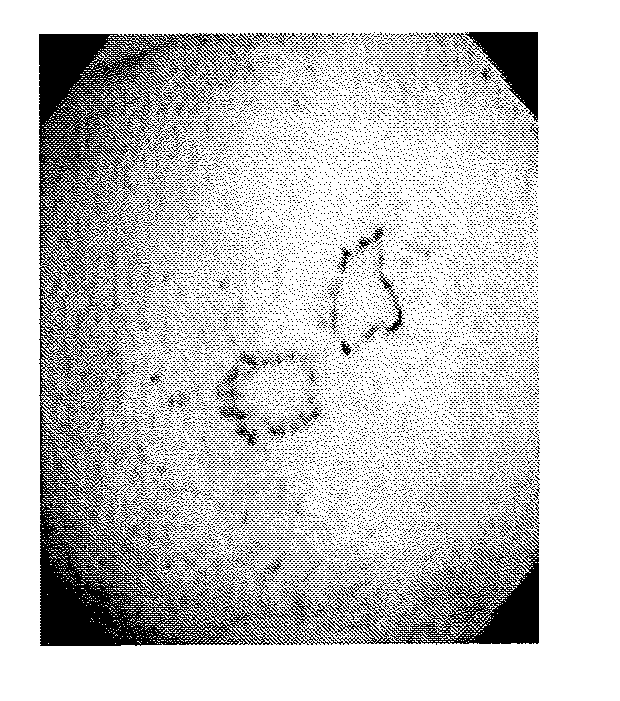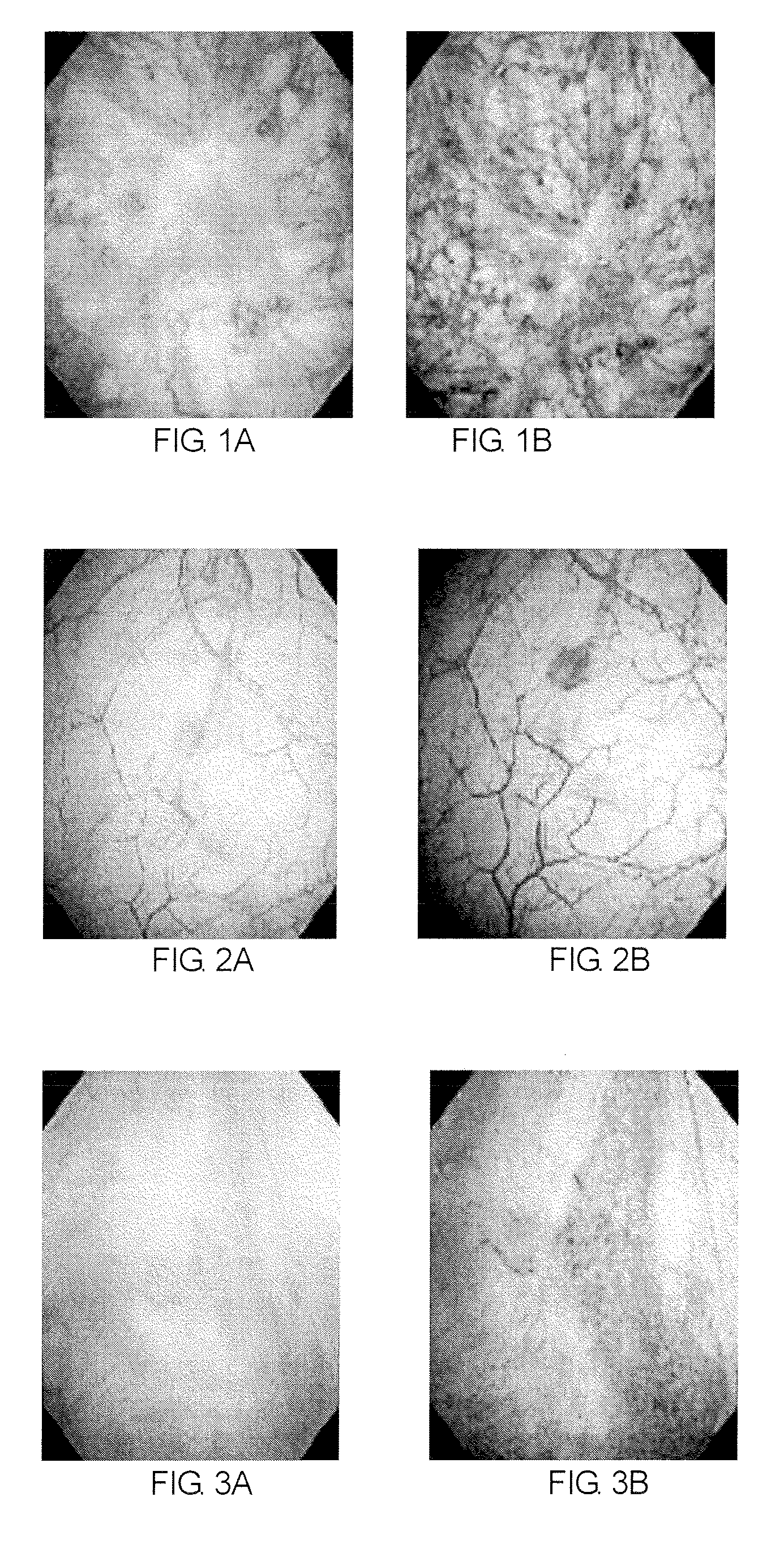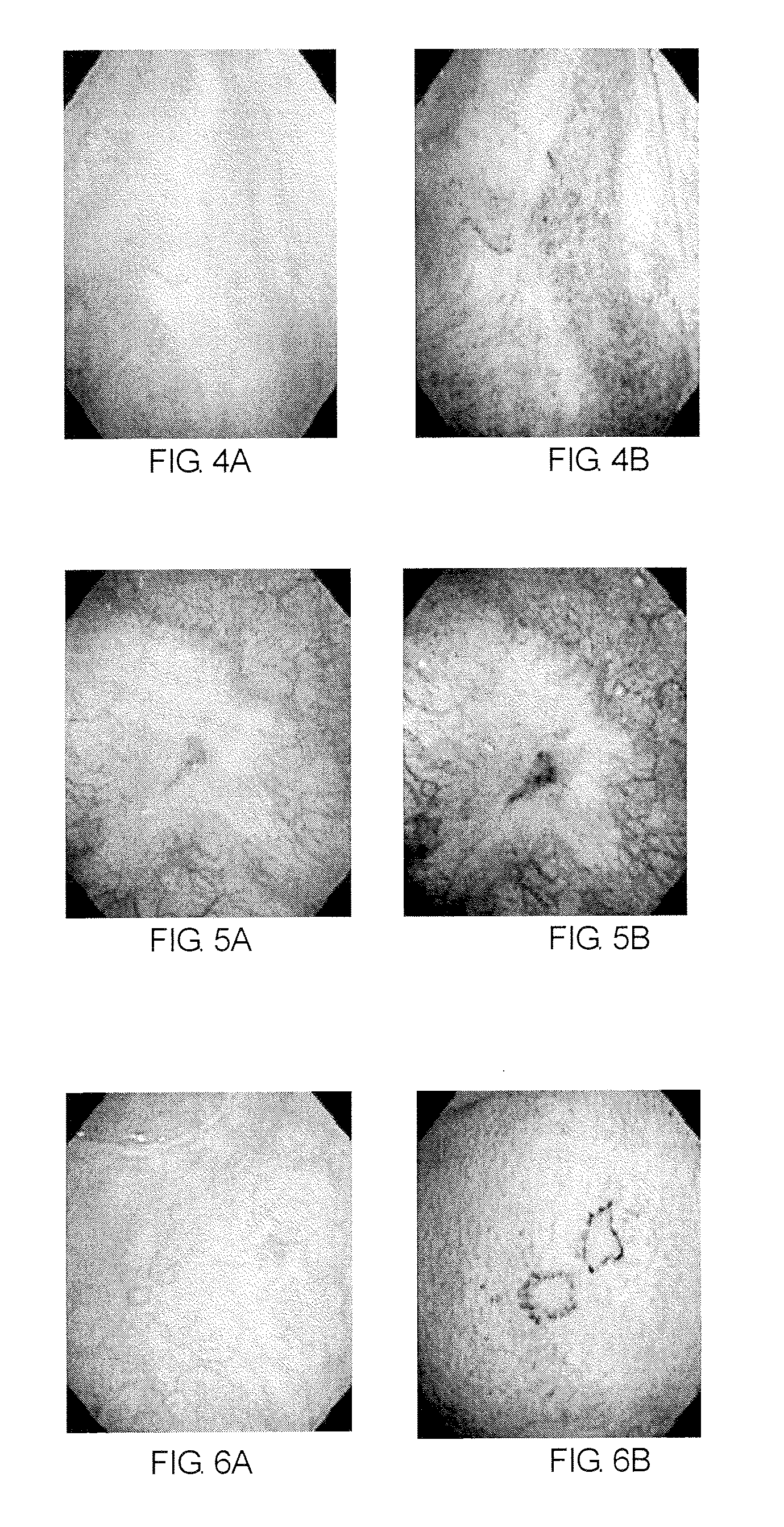Method of diagnosing a lower urinary tract disorder
a technology of urinary tract disease and diagnosis method, which is applied in the field of diagnosing lower urinary tract diseases, can solve the problems of pain after treatment, large problem of low sensitivity, and inability to cure interstitial cystitis with conventional antibiotic therapy
- Summary
- Abstract
- Description
- Claims
- Application Information
AI Technical Summary
Benefits of technology
Problems solved by technology
Method used
Image
Examples
examples
[0038]The present invention will now be described further specifically with reference to the examples, but the scope of the invention is not limited to the following examples.
[0039]Six subjects diagnosed to be suffering from ulcer interstitial cystitis and having an average age of 64 years were subjected to bladder endoscopy. The six subjects had symptoms in the O'Leary and Sant questionnaire. The ulcer lesions of bladder mucous membrane were observed with conventional bladder endoscopy under spinal anesthesia and then observed with the NBI system.
[0040]FIGS. 1A through 6B are photographs of the ulcer lesions of the above-mentioned subjects suffering from ulcer interstitial cystitis taken with the conventional bladder endoscope using usual visible light (FIGS. 1A, 2A, 3A, 4A, 5A and 6A) and taken with the NBI system using light of 415 nm (FIGS. 1B, 2B, 3B, 4B, 5B and 6B). The photographs taken with the NBI system clearly show angiogenic lesions and ulcer lesions.
[0041]In other words...
PUM
 Login to View More
Login to View More Abstract
Description
Claims
Application Information
 Login to View More
Login to View More - R&D
- Intellectual Property
- Life Sciences
- Materials
- Tech Scout
- Unparalleled Data Quality
- Higher Quality Content
- 60% Fewer Hallucinations
Browse by: Latest US Patents, China's latest patents, Technical Efficacy Thesaurus, Application Domain, Technology Topic, Popular Technical Reports.
© 2025 PatSnap. All rights reserved.Legal|Privacy policy|Modern Slavery Act Transparency Statement|Sitemap|About US| Contact US: help@patsnap.com



